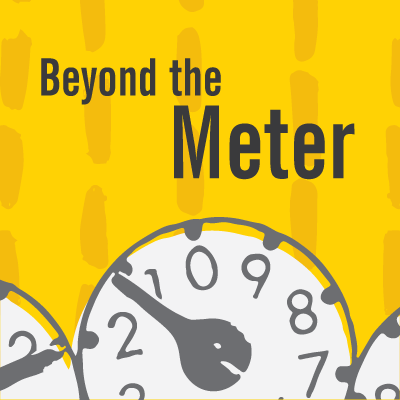Look Who Switched To Renewables: Sprint’s Journey To Lower Emissions
Lower emissions are one of the many goals being set by corporations across the country to reduce their carbon footprint and exercise corporate responsibility. Naturally, every company has its own unique set of hurdles to overcome in setting and attaining such goals. In this conversation Amy Bond, Energy and Sustainability Program Manager at Sprint explains how Sprint started looking into what it could do to procure energy from renewable sources back in 2008, but nothing fit their situation at that time. Fast forward to 2018 and it’s an entirely different story.
Join Smart Energy Decisions Founder, John Failla as he speaks to Amy about Sprint’s journey. Joining the conversation is Scott Macmurdo, Business Development Director at Duke Energy, Sprint’s partner in its recent Virtual Power Purchase Agreement.
Outline of This Episode
- [0:33] John’s introduction of this conversation from the 2019 Renewable Energy Sourcing Forum
- [1:20] Amy Bond’s big announcement: Sprint’s first PPA with Duke Energy Renewables
- [4:20] The beginning of Sprint’s journey, the SED conference in Austin, TX
- [6:20] Starting on the journey with no overarching climate goals
- [8:09] Internal and practical obstacles faced in getting the deal done
- [12:36] Explaining the opportunity across departments
- [15:17] Key things corporate buyers should be thinking about
- [21:13] How the CEO was enlisted as an ally early in the process
Sprint’s first Power Purchase Agreement in partnership with Duke Energy Renewables
At the recent 2019 Renewable Energy Sourcing Forum, Amy shared the culmination of Sprint’s journey for the first time. It’s a 12 year Virtual Power Purchase Agreement that Duke Energy has put together. Duke will build and operate a 182-megawatt wind farm in West Texas and Sprint will purchase 95% of the output from the facility for use in its facilities. Amy says that amount us almost 30% of Sprint’s entire energy consumption.
But please understand, Sprint did not come to this place overnight. Their journey toward sustainability goals that made sense for them as a company was begun in 2008. Ten years later, it’s finally coming to fruition.
Ten years of trying, iterating, and striving to come to renewable energy success
Sprint first launched its environmental goals in 2008 and hoped to meet them by 2017. One of those goals was to acquire 10% of the company’s energy from alternative sources by 2017. Those goals were not met. The first option the company considered was the purchase of hydrogen fuel cell racks in 2008. The project proved to be impractical from a cost perspective.
The first VPPA Sprint ever considered came in 2014, but again the economics didn’t make sense at the time. But Amy says that the unexpected by-product that came from those efforts was that an internal renewable energy team was assembled, so when 2018 came around all of those team members were still with the company and were still interested in working toward a way to reduce emissions as a company. This gave them a jump start on moving projects forward once the costs were more aligned with their goals and needs.
Sprint had no overarching climate goals – but engaged with renewable energy anyway
The goals Sprint generated back in 2008 were never realized. When Amy came to see that the practical and financial limitations previously experienced were no longer the case, she began pitching the idea to key stakeholders right away. Through months of discussion and hard work, the team cooperated with Duke Energy Renewables to put a plan in place that everyone involved could sign off on.
Notice something important – Sprint had no renewable energy goals in place at the time but the company was able to move forward anyway. Don’t let any perceived lack in your renewable energy policy or goals hold you back from moving to reduce emissions for your company. You can do it!
Key things for corporate buyers to be thinking about
When looking at a potential VPPA deal, there are many things to pay close attention to in order to move the deal forward. First, you need to work hard to frame the project in ways that make sense within your organization. Amy also stresses that you need to look closely at your developer (Duke Energy Renewables, in this instance). The relationship will be a 12-year relationship in Sprint’s case. It’s important to feel comfortable and confident – and to know that all the stakeholders can feel the same – as you move into that kind of relationship.
Scott points out that corporate buyers should understand that the timeline you work from initially will not remain intact. It’s not that anyone is communicating wrongly or misrepresenting the deal, it’s that hurdles will arise and you’ll have to find workarounds. Because that’s always the case – be sure you seek help. Third-party consultants that specialize in renewable energy are worth having on board. Even though they will result in higher initial costs, they enlarge the pie for everyone by equipping your organization with the knowledge you need to get the deal to the finish line.
Resources & People Mentioned
- The Renewable Energy Sourcing Forum
- Duke Energy Renewables
- Cinemark Sustainability Efforts
- Cargill Sustainability Efforts
- The Renewable Energy Production Tax Credit
- Sprint’s Corporate Sustainability Goals
Connect with Amy and Scott
- Amy Bond on LinkedIn,
- Scott Macmurdo on LinkedIn
All Episodes of Beyond The Meter
Subscribe to Beyond The Meter on
Apple Podcasts, Google Podcasts, Android, Spotify, Stitcher, TuneIn Radio, aCast, PlayerFM, iHeart Radio






